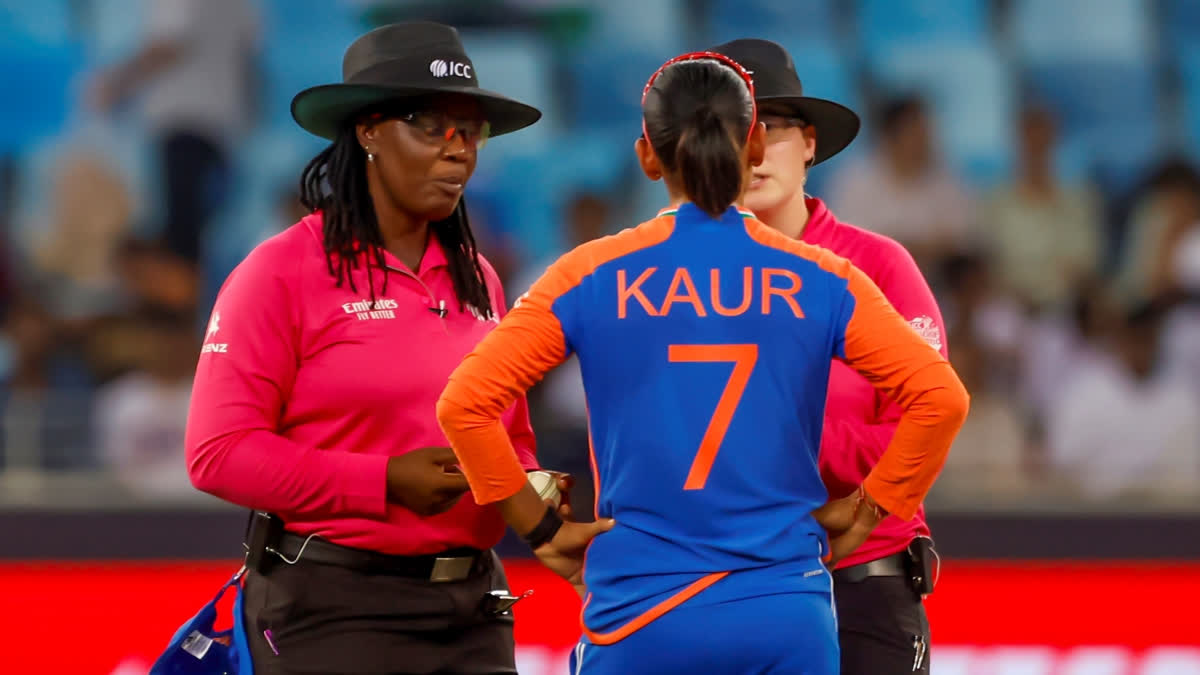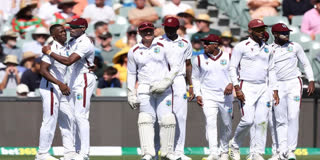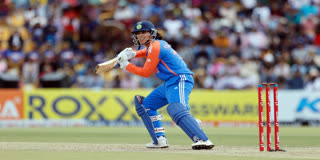IND W vs NZ W Run Out Controversy: What's Dead Ball Rule And Why Did Umpires Call Legal Delivery A Dead Ball?
As Ravichandran Ashwin and fans raised questions on umpires after the run-out controversy, let's understand the rule and why on-field umpires called it a no-ball.


Published : Oct 5, 2024, 2:46 PM IST
Dubai (UAE): India vs New Zealand Women's T20 World Cup 2024 clash in Dubai saw a run-out controversy during the 14th over of Kiwi's innings when right-hand batter Amelia Kerr pushed for a single after guiding the length ball from right-arm off-spinner Deepti Sharma towards long-off.
The incident happened when Indian captain Harmanpreet Kaur collected the ball with ease and sprinted towards the bowler's end but soon realised that New Zealand batters were looking for a second run. She immediately threw the ball towards wicketkeeper Richa Ghosh, who dived to run out Kerr. However, Kerr was stopped on her way back to the pavilion when the on-field umpires called the delivery a dead ball, sparking major controversy both on and off the field.
New Zealand win Match 4⃣ of the #T20WorldCup.#TeamIndia will aim to bounce back in the next game.
— BCCI Women (@BCCIWomen) October 4, 2024
Scorecard ▶️ https://t.co/XXH8OT5MsK#INDvNZ | #WomenInBlue pic.twitter.com/DmzOpOq87g
The Indian captain and the whole dugout were unhappy with the umpire's decision and furiously argued with them. Even the head coach Amol Mazundar was caught having an animated discussion with the fourth umpire near the boundary line.
Following the incident, the video went viral on social media with Indian cricket fans questioning the logic behind the dead-ball call. Not even fans, but India's ace off-spinner Ravichandran Ashwin also questioned a glaring error in the run-out controversy. "The over was called before the start of the second run. Whose fault is this? @prithinarayanan," Ashwin wrote before deleting his post.

So, let's dive deeper into the issue and understand the rule, why did on-field umpires call that particular delivery a dead ball and was this a right call or not?
What's the dead-ball rule?
The on-field umpires may have made a mistake in calling it a dead ball, but by sticking to their decision of not out, they abided by the Laws of Cricket. According to Law 20, which pertains to dead ball, clause 20.1 states: "The ball shall be considered to be dead when it is clear to the bowler’s end umpire that the fielding side and both batters at the wicket have ceased to regard it as in play."
Neither of the two sides stopped the play as New Zealand attempted a second run, while Harmanpreet looked to run out the batter. However, the umpires could do nothing once they called it a dead ball. "Once the ball is dead, no revoking of any decision can bring the ball back into play for that delivery," says clause 20.6.





